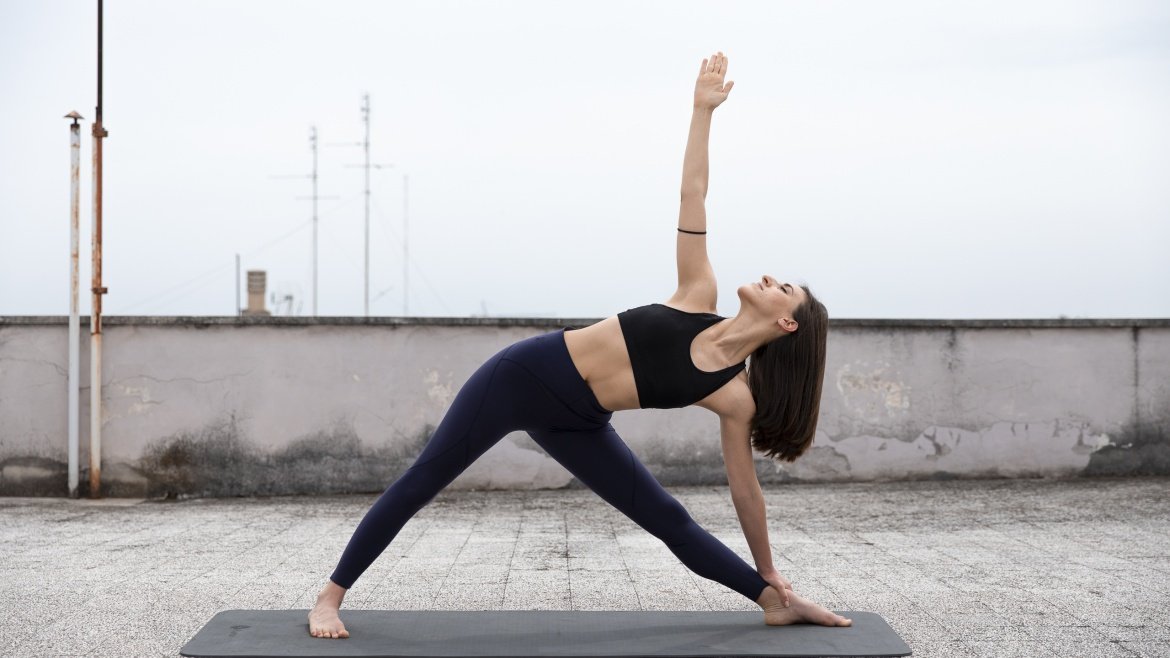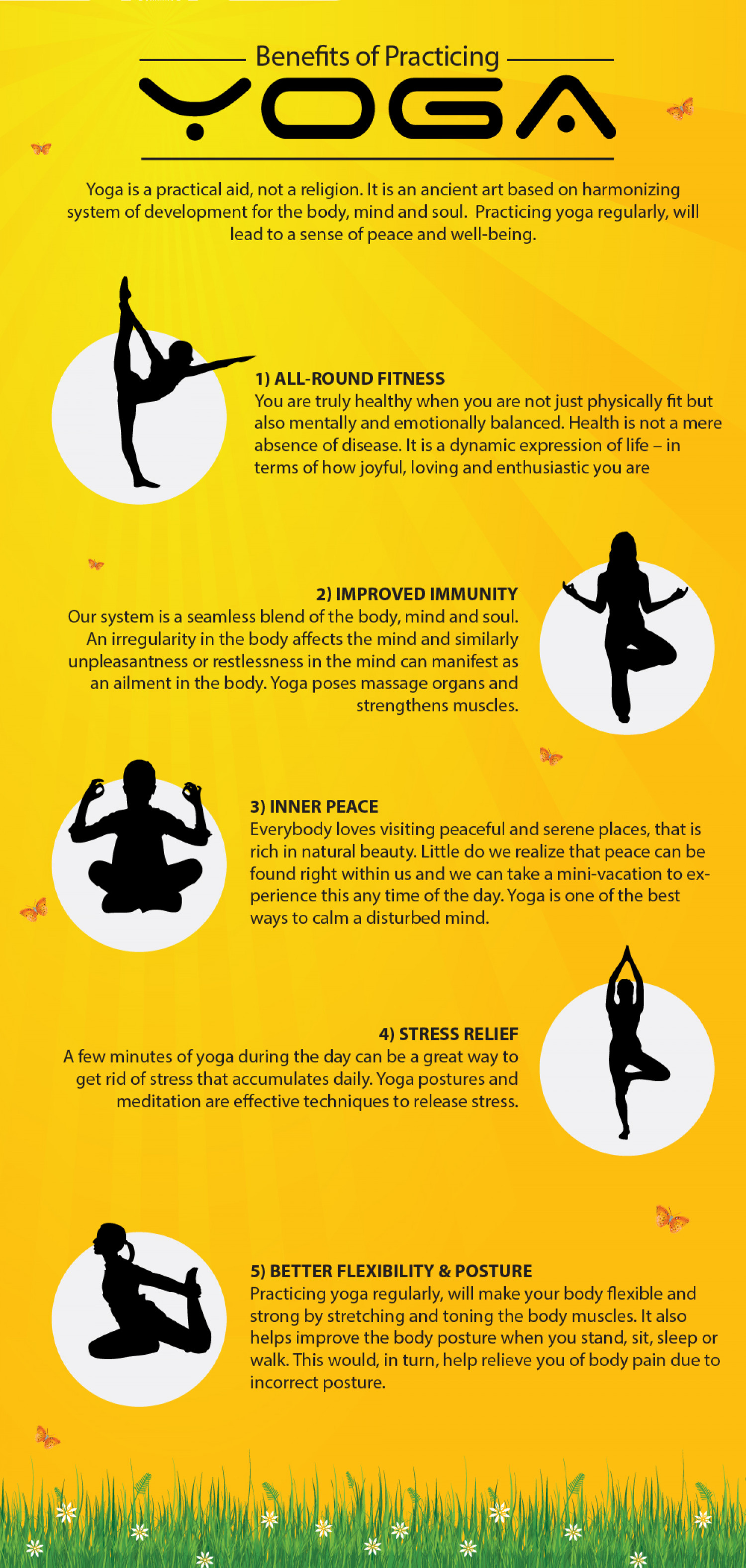
To increase your resistance and challenge yourself in your yoga poses, you can add blocks. These are the four types of yoga you can do using blocks. Stretch your feet, ankles, thighs, and core. Although these exercises are challenging, they can improve your overall fitness. These exercises can be challenging for balance and core strength, provided you are able to stand on one foot. Keep your arms close to your sides.
Pose variations
If you don’t feel confident doing yoga on your mat, there are many modifications you can make with blocks. Supported bridge is one the most well-known modifications. To do it with blocks, you'll need to start in bridge pose prep. Lift your low back off the mat, and then slide the blocks under your sacrum. You may need adjust the distance between two blocks depending upon the height of the blocks. Add a few blocks to each hip to make it more challenging.
Single-Legged Bridge Lifts can be used as an alternative to Bridge pose. This variation will work your lower body as well as your abs. Start by placing one leg on blocks. Next, place the other in front of the sky. Keep your hips level with the ground. To prevent your elbows sticking out, you may need to wear tights or hold on to a block. To prevent your elbows from slipping, if your legs aren't long enough to reach the ground, you might need to keep your hands on the blocks.
Resistance to common moves

It is possible to increase the variety and challenge of some yoga moves by adding resistance. This is especially beneficial for balancing moves such as Half Moon. The Half Moon requires activation and stabilization of the trunk and external hip rotators to balance the leg. Using a resistance band to increase the challenge of certain poses can also give you a better understanding of your body as a whole.
Optimize alignment
It is important to pay attention to your alignment when you do yoga. This will not only ensure safe practice but also lowers your risk of injury. Yoga can cause injuries that are cumulative. This is due to years of repetitive movement of the same body part or joint. To maintain proper alignment, it is important not to follow long-held patterns of movement. Instead, use props sparingly when practicing yoga. These are three ways to improve alignment when using yoga blocks.
Yoga blocks are useful in many positions, from forward folds to complex balance or flexibility poses. They can also help you focus on opening and stretching during difficult poses. This allows you to hold poses longer and increase your strength while also allowing you to focus on your breathing. A better alignment is essential for your health. Because they can be used in so many positions, including seated or lying down variations of popular yoga poses, they are very versatile.
Stretch your feet, ankles and legs
Use a yoga mat, a blanket folded over your body, or a pillow to stretch. Place your heels on the yoga block's edge and kneel down. Keep the block between you shins and lean forward. You can hold this position for between 30 and 2 minutes. Breathe in and out while stretching your ankles. If this seems too painful, lean forward slightly or take a small step ahead.

A yoga block is another useful prop. You can achieve better alignment and support while stretching your feet, ankles, and legs with these props. These props can also reduce the distance between your hand & the surface. This can make it easier for you to lift your torso or expand your chest. You can also use them for activating your obliques as well as challenging your transverse abdominals. The blocks can be used to improve your focus when you practice yoga.
FAQ
Why is it essential to improve emotional health?
Emotional health is essential for happiness and well-being. If you don't feel emotionally healthy, you won't be able to perform at your best. People suffering from depression often feel unable or unwilling to work. Anxiety, panic attacks or insomnia may be common symptoms. These conditions can be successfully treated with medication or therapy.
These are 5 ways to improve your well-being.
The state of being well is defined as the "state of physical, mental and spiritual well-being." Several factors affect our well-being, such as family, work, health, relationships, community, environment, education, finances, etc. The first step in improving your well-being involves identifying the areas of your life that need improvement. Then, you can work to make these changes.
Here are five methods to improve your health and well-being.
-
Exercise - This increases endorphin levels, which makes us happier.
-
Sleep – A longer sleep time reduces stress and anxiety.
-
Nutrition - Eating healthy foods (such as fruits and vegetables) will boost your mood.
-
Meditation - Regular meditation reduces stress and anxiety.
-
Socialization – It's important to spend time with loved ones and make friends.
Why mental health is important?
Work, play, learn and love. Our mental health is a reflection of our overall well-being. The physical, psychological as well as social, spiritual and environmental factors that influence us every day are all part of mental health. The good news? There are many ways to take care of yourself mentally. It's not necessary to do all the things at once. You can just start!
Understanding where your mental health stands now is the first step toward improving it. To find out if your support system is adequate, take this quiz. If your score is low you might need to change your lifestyle.
Suppose you scored high, congratulations! Let's now look at what you can do to maintain or improve your mental health.
-
Get Enough Sleep. You can keep your brain sharp, energized and alert by getting enough sleep. The American Academy of Pediatrics (AAP), recommends that children get 7 to 8 hours of sleep per night.
-
Exercise Regularly. Exercise releases endorphins which can make you happy and less likely be stressed. Try to do 30 minutes of exercise five days a week.
What do psychologists say about mental health?
Psychologists believe that mental wellness is an essential component of human development. Psychologists also believe mental health is about more than having no mental illnesses. It's also about being mentally fit.
There are many opinions among psychologists regarding mental health. Some psychologists believe mental health is unnecessary because so many people don't have any mental illnesses. Others believe that mental health and functioning properly are essential.
What can I do to improve my mental health and well-being?
Everybody needs to be healthy, especially if they are under stress at work, school or home. The best way to improve your mental health is to exercise regularly, eat healthy food, sleep well, and spend quality time with loved ones. Exercise releases endorphins that make us feel happier. Good nutrition is essential for a healthy body. Being well-rested gives us energy to get through the day. Spending quality times with loved one improves relationships and reduces stress.
What is Positive Psychology? Why is it Important?
Positive psychology emphasizes what makes us feel good about ourselves. This includes happiness, optimism, gratitude and hope. Positive psychology seeks to make individuals happier, healthier and more intelligent through self-improvement.
There are two types of positive psychology: trait positive psychology and process positive psychology. Trait positive psychology studies how people naturally tend to behave. The process of positive psychology studies how to use specific strategies to achieve certain goals.
Statistics
- According to the National Alliance of Mental Illness (NAMI), one in five Americans experiences mental health issues which translates to more than 40 million adults a year. (doctorondemand.com)
- More than 50% will be diagnosed with a mental illness or disorder at some point in their lifetime.3 (cdc.gov)
- More than 40 million adults in the United States have an anxiety disorder, but less than 37% of people seek mental health treatment for their symptoms. (talkspace.com)
- Similarly, for positive mental health, there is likely to be substantial agreement about some typical components (e.g., resilience to stress) 6, and controversy about more atypical components (e.g., career consolidation). (ncbi.nlm.nih.gov)
- In any given year, an estimated 18.1% (43.6 million) of U.S. adults ages 18 years or older suffered from any mental illness, and 4.2% (9.8 million) (healthypeople.gov)
External Links
How To
How to Manage Stress
Stress is normal. We need to learn how to relieve stress. Stress can affect every area of your life. Stress can cause problems like neck pain, back pains, headaches, stomach aches and constipation. You may even develop ulcers if you're under chronic stress.
There are many methods to reduce stress. Exercise helps you release endorphins, which make you happy, relaxed, and calm. Meditation reduces stress levels by slowing down to take deep, calm breaths. Yoga is another great way of reducing stress and improving overall health.
It is important to learn how stress can be controlled and eliminated. Ask someone who is experienced to help you.